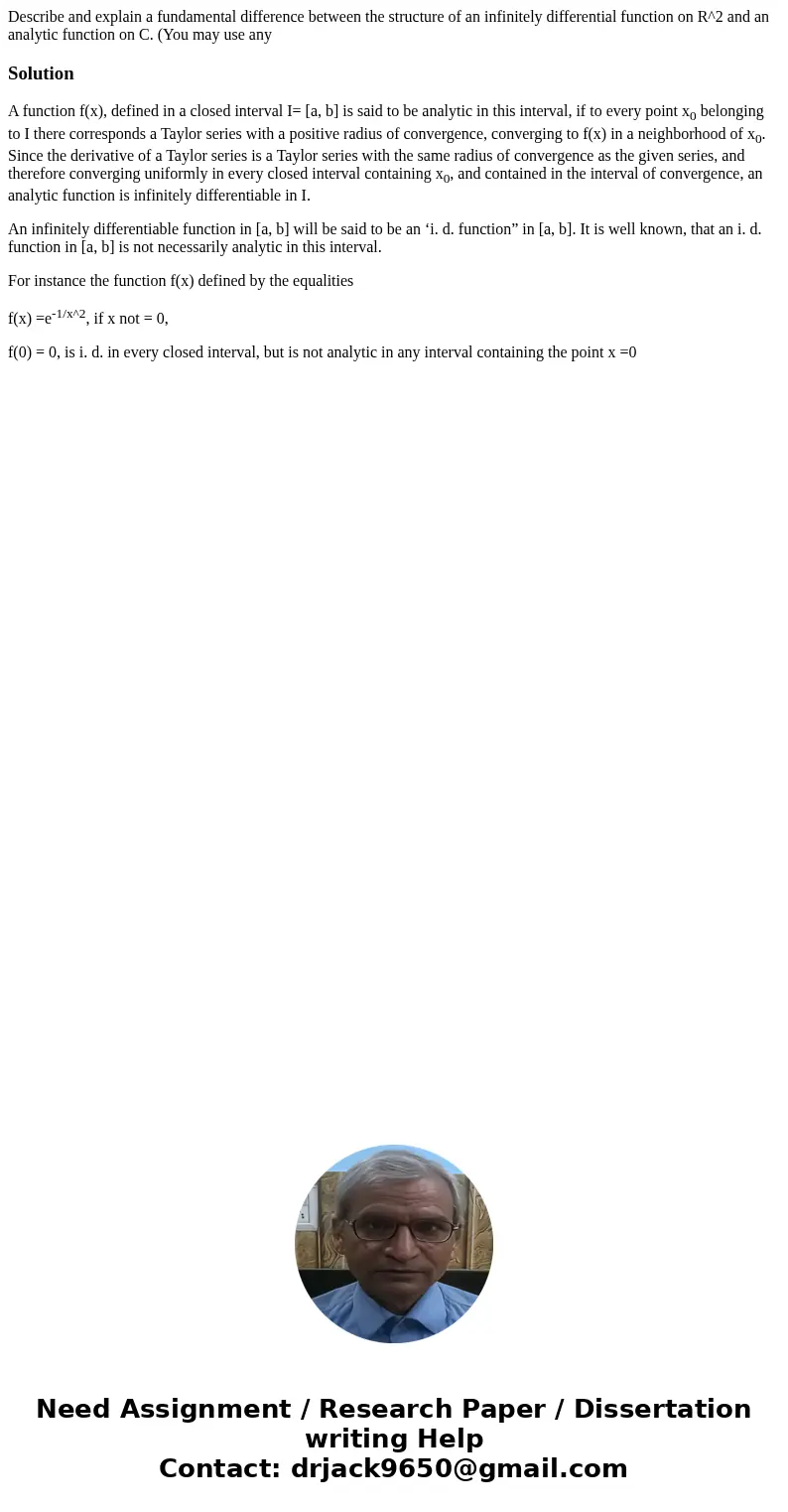Describe and explain a fundamental difference between the st
Solution
A function f(x), defined in a closed interval I= [a, b] is said to be analytic in this interval, if to every point x0 belonging to I there corresponds a Taylor series with a positive radius of convergence, converging to f(x) in a neighborhood of x0. Since the derivative of a Taylor series is a Taylor series with the same radius of convergence as the given series, and therefore converging uniformly in every closed interval containing x0, and contained in the interval of convergence, an analytic function is infinitely differentiable in I.
An infinitely differentiable function in [a, b] will be said to be an ‘i. d. function” in [a, b]. It is well known, that an i. d. function in [a, b] is not necessarily analytic in this interval.
For instance the function f(x) defined by the equalities
f(x) =e-1/x^2, if x not = 0,
f(0) = 0, is i. d. in every closed interval, but is not analytic in any interval containing the point x =0

 Homework Sourse
Homework Sourse